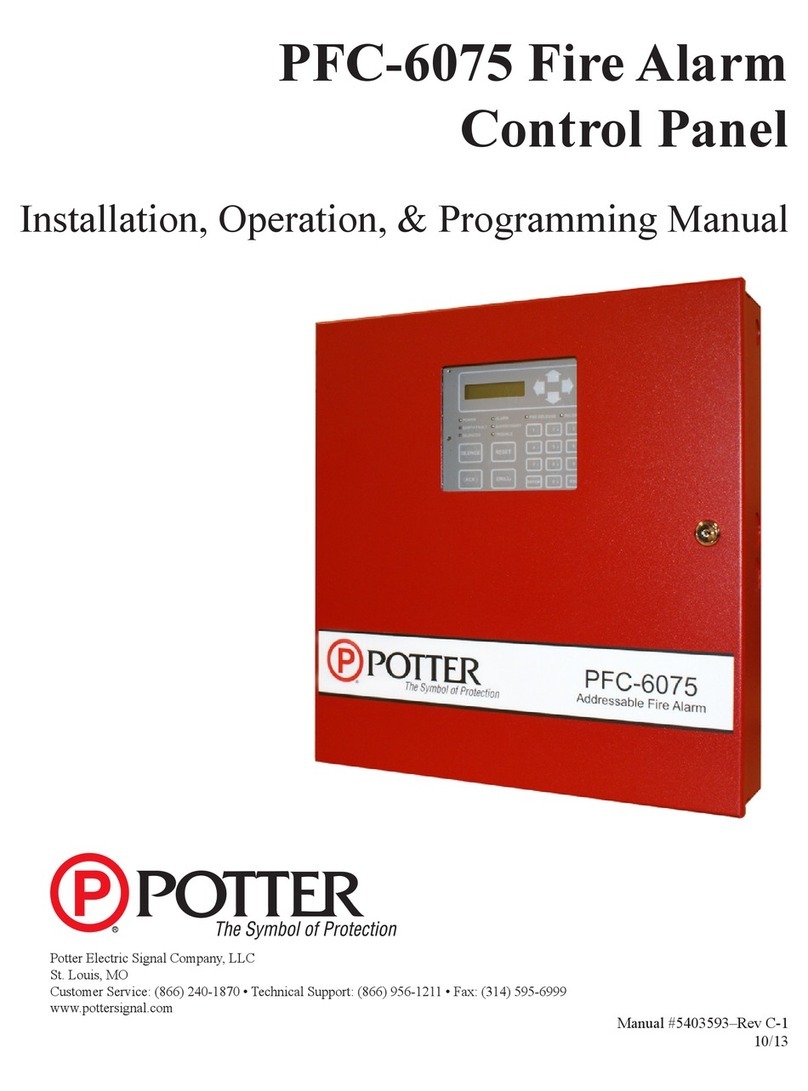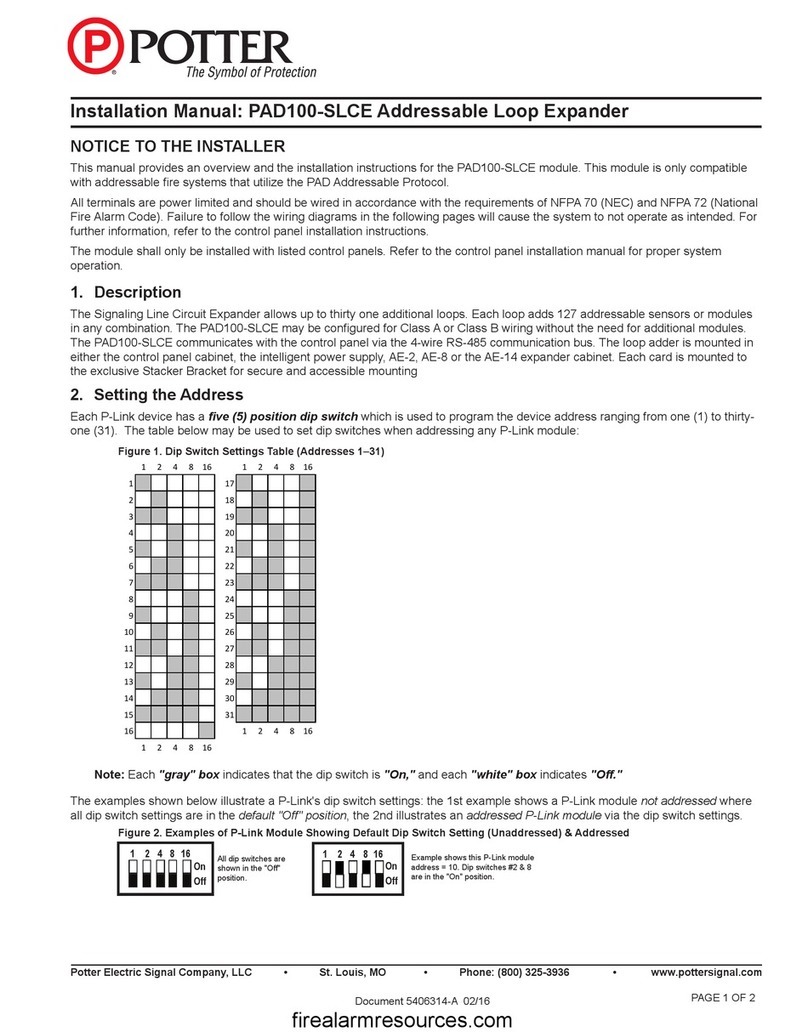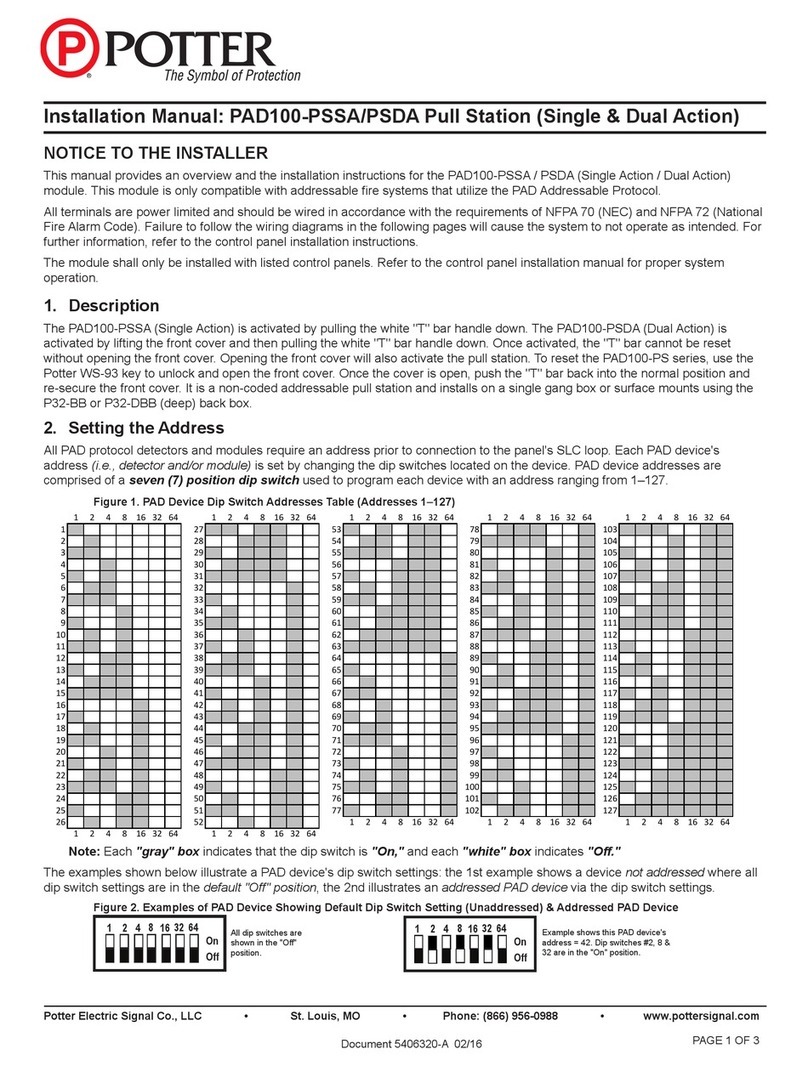
iii
Panel Specications
1.1 Power Supply .......................................................................................... 1
1.2 Communication....................................................................................... 1
1.3 Panel Zones ............................................................................................. 1
1.4 Remote Annunciators (Alphanumeric or LED Keypads) ....................... 1
1.5 Auxiliary Outputs.................................................................................... 1
1.6 Push-Button Reset................................................................................... 1
1.7 Enclosure Specications ......................................................................... 1
Introduction
2.1 Description .............................................................................................. 2
2.2 Zone Expansion....................................................................................... 2
2.3 Caution Notes.......................................................................................... 2
2.4 Compliance Instructions.......................................................................... 2
System Components
3.1 Description .............................................................................................. 3
3.2 PFC-7501 Wiring Diagram ..................................................................... 3
3.3 PFC-7500 Wiring Diagram ..................................................................... 4
3.4 Lightning Protection................................................................................ 4
3.5 Keypads................................................................................................... 4
Installation
4.1 Mounting the Enclosure .......................................................................... 5
4.2 TAM Trouble Annunciator Module......................................................... 5
4.3 Mounting Keypads.................................................................................. 6
4.4 Wiring Specications for the Keypad Bus.............................................. 6
4.5 Terminal Wiring Connections ................................................................. 6
Primary Power Supply
5.1 Installing the Transformer....................................................................... 7
5.2 Terminals 1 and 2.................................................................................... 7
Secondary Power Supply
6.1 Battery Terminals 3 and 4 ....................................................................... 8
6.2 Earth Ground........................................................................................... 8
6.3 Replacement Period ................................................................................ 8
6.4 Discharge/Recharge ................................................................................ 8
6.5 Battery Supervision................................................................................. 8
6.6 PFC-7500/PFC-7501 Power Requirements ............................................ 9
6.7 PFC-7500/PFC-7501 Standby Battery Calculations............................... 9
Bell Output
7.1 Terminal 5 (PFC-7501 Only) ................................................................ 10
4-Wire Smoke Detector Power
8.1 Terminal 6 (PFC-7501 Only) ................................................................ 10
Keypad Bus
9.1 Description ............................................................................................ 10
9.2 Terminal 7 - RED.................................................................................. 10
9.3 Terminal 8 - YELLOW ......................................................................... 10
9.4 Terminal 9 - GREEN............................................................................. 10
9.5 Terminal 10 - BLACK .......................................................................... 10
Class A (Style D) Fire Zone
10.1 Description ............................................................................................ 10
Class B (Style A) Fire Zones
11.1 Description ............................................................................................ 11
11.2 Operational Parameters ......................................................................... 11
11.3 Zone Response Time............................................................................. 11
11.4 Compatible 2-Wire Smoke Detectors ................................................... 11
Table of Contents
































